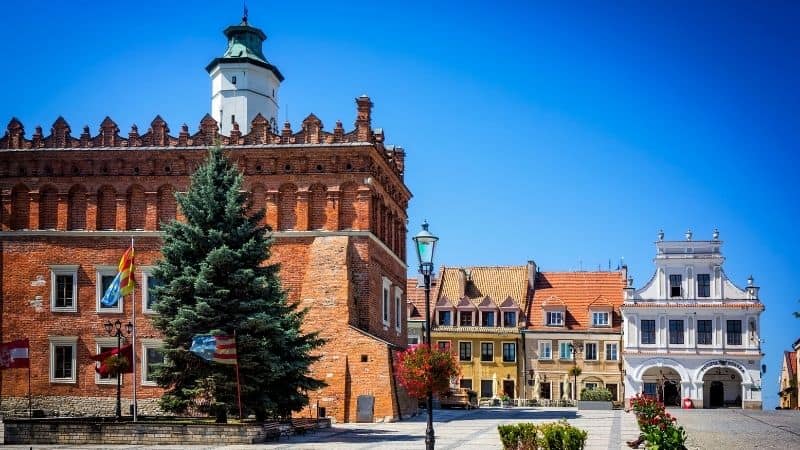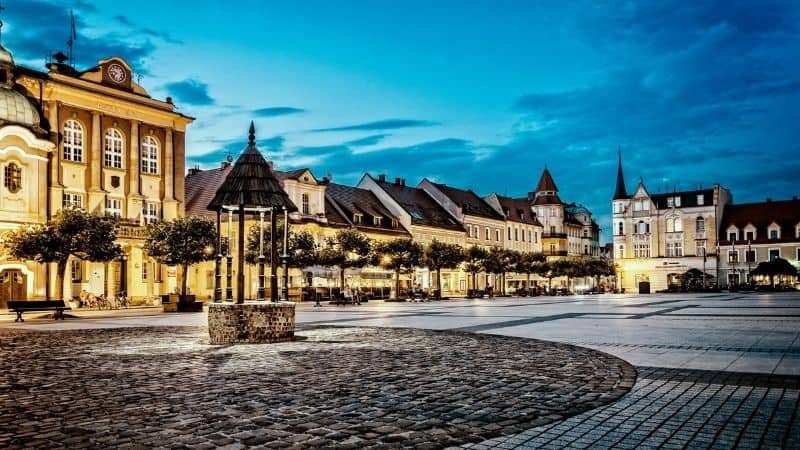Less Known Towns in Poland You Should Visit
When foreign tourists think of Poland, they usually think of large, famous cities, such as Warsaw, Krakow, Lodz or Wroclaw. But this country also has several smaller towns, which might not be equally famous, but still have their own charm and inquisitive attractions. In this article, you will be able to read about various towns, which prove, that the attractiveness of the tourist destination is not determined by its size, but rather by the things it has to offer.
Kazimierz Dolny

Kazimierz Dolny is a Polish town, located in the lubelskie region, upon the river Vistula.
In terms of history, Kazimierz Dolny is located in Lesser Poland. In the beginning, it was part of the Sandomierz land, and later it became part of the Lublin land.
The origins of the settlement date all the way back to the 11th century. At one of the hills, there was a settlement known as Wietrzna Gora, which was owned by the Benedictine monastery.
According to legend, Kazimierz Wielki established the town and constructed the defensive castle. Kazimierz Dolny gained municipal rights in the first half of the 14th century.
In the town of Kazimierz Dolny, you can not only admire gorgeous views, but also enjoy a local treat – cookies shaped like roosters.
Sandomierz

Sandomierz is a Polish town in the swietokrzyskie region, which became popular in recent years because of a tv show called „Ojciec Mateusz”, which was filmed here.
The oldest traces of settlement in this area date all the way back to the neolithic period. The oldest documented settlement was established in the 10th century A.D. Since the 11th century, there was a castle here, which was a princely headquarters and a provincial town.
Some of the most well known monuments of Sandomierz are:
The cathedral Basilic of the Birth of the Blessed Virgin Mary – a gothic church constructed around the year 1360 and expanded in the mid-15th century.
The 18th-century bell tower, which witnessed some of the most crucial events in the history of Sandomierz.
Lanckorona

Lanckorona is a Polish village located in the region of Lesser Poland. The town of Lanckorona was established, because the wealthy hunting area was often visited by Kazimierz III Wielki. Another reason was the village’s close proximity to the Wawel Castle. According to written documents, mostly manuscripts by Jan Dlugosz, the castle in Lanckorona was founded by Kazimierz III Wielki, in the early years of his reign. Its construction was finished in the mid-14th century. The royal town, which is currently known as Lanckorona, was established on the Magdeburg Law between 1361 and 1361.
One of the most beautiful monuments in Lanckorona is the Church od the Birth of st. John the Baptist, which was constructed in the 14th century and consecrated on September 29th 1649 by bishop Wojciech Lipnicki.
Zlotoryja
Zlotoryja is a town in south-west Poland, in the dolnoslaskie region. Between the 8th and 10th century A.D., the surroundings of Zlotoryja as we know it today were enhabited by the representants of the Trzebowianie tribe. In the late 12th century, German miners settled here to gather gold, and that’s where the name of the town came from.
In 1241, several hundreds of miners from Zlotoryja took part in the battle against the Mongols upon Legnica, but most of them died during the battle.
Some of the most famous attractions in Zlotoryja are:
The Museum of Gold – established in July of 1978 from a social initiative and with the help of the city government. The headquarter of the museum is located at 2 Zaulek street.
The remainings of the defensive walls – constructed in the 14th century in the place of the earlier wooden-earth fortifications from the 13th century,
Krynica-Zdroj
Krynica-Zdroj is a town in Lesser Poland. It was established in 1547, and its original name was Krzenycze. From the early years of its existence to the first partition of Poland, it was part of the so-called Muszyna Borderland, which was owned by the bishops of Krakow.
In 1793, a government commissioner from the nearby town of Nowy Sacz named Franciszek Stix von Saunbergen acquired the local land with a mineral water spring, because he wanted to establish a health spa.
The first historical mention of the healing properties of the local water springs originated from a book by priest named Gabriel Rzaczynski, which was published in the first half of the 18th century. The first scientific research of the waters of Krynica were organized by professor Baltazar Hacquet from the University of Lviv for the order of the government of Austria. The oldest building in Krynica is the „Slotwinka” pump room.
Pszczyna

Pszczyna is a town in southern Poland, located in the slaskie region. Its origins date back to the middle ages, when it was a local administrative center and the headquarters of the castellany. The first historical mention of Pszczyna originated from 1303 and tells us about Wielislaw, who was the local castellan at that time. Based on that information, it is highly possible, that a castle already existed here earlier.
For two centuries, Pszczyna was ruled by the Promnitzes. Those were tough times, because in the 17th century, the land of Pszczyna was horribly ravaged because of the warfare and occupation by various armies during the 30-year war.
One of the most iteresting attractions in Pszczyna is a local castle, which used to be the a magnate residence. Its origins date back to the 11th or 12th century, when it was constructed by the Piast princes as a watchtower by a trading route, which connected Moravia to Kievan Rus.
Gniezno
Gniezno is a Polish town located in the region of Greater Poland. It was the first capital of Poland.
The oldest traces of settlement in the area of Gniezno as we know it today originated from the late paleolithic period, approximately 8000-10.000 years ago. The first castle in Gniezno was constructed at the Lech Hill between 940 and 941 A.D., and it was expanded and modernized during the reign of Mieszko I.
In 1000, a convention took place in Gniezno with the participation of Boleslaw I Chrobry and Otton III. During that convention, the Gniezno metropolis and archbishopric were established.
The greatest monument in Gniezno is the Gniezno cathedral along with the Lech Hill. In the cathedral, visitors can admire the Gniezno door, which present the memoir of st. Wojciech.
Wadowice
Wadowice is a town located in southern Poland, in the region of Lesser Poland. It is bestknown among the people of Poland as the birthplace of Karol Wojtyla, who became a pope known as Jan Pawel II. During his days as a pope he was on a pilgrimage to his home town three times: in 1979, 1991 and 1999.
The oldest settlements in the direct neighborhood of Wadowice were Rokow and Mucharz. They were both first mentioned in 1254. The next historical mention of the town appeared in 1400.
In 1430, during the reign of prince Kazimierz of Oswiecim, a great fire completely destroyed Wadowice.
In 1772, as a result of the first partition of Poland, Wadowice was included within the borders of the Habsburg Empire.
One of the most popular attractions in Wadowice is the Family Home of Jan Pawel II, the Holy Father – a museum located in the house, where Karol Wohtyla and his family used to live. This museum documents the life and papal activity of Jan Pawel II, as well as his connections to Wadowice.